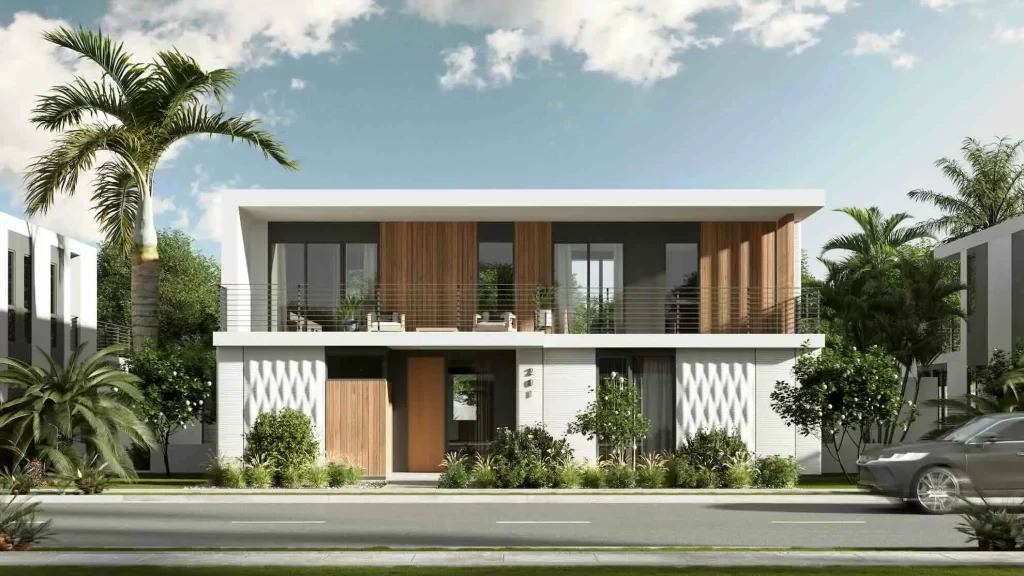Construction 3D printing firm Mighty Buildings, together with Lawrence Berkeley National Laboratory (LBNL), and Habitat for Humanity, have been awarded a $5 million GFO-22-305 grant from the California Energy Commission.
The grant focuses on advancing and testing modular, cost-effective homes with a zero or near-zero carbon footprint. Its primary objective is to foster sustainable housing solutions for under-resourced communities, specifically for low-income families. This initiative aims to construct three advanced prefabricated low-carbon townhouses in Bay Point, California, addressing affordability, sustainability, resilience, and accelerated construction timelines.
“We are thrilled to embark on this groundbreaking project. Our collaboration with Lawrence Berkeley National Laboratory and Habitat for Humanity reflects our commitment to innovation, sustainability, and our community,” said Scott Gebicke, CEO of Mighty Buildings. “The support provided by this grant goes beyond building three townhomes; it’s actively shaping the future of construction in California. We envision a future where affordable, resilient, and energy-efficient homes are the standard, not an exception.”

Building a greener tomorrow
Leveraging its 3D printing technology, Mighty Buildings is set to construct the walls of the homes at its Oakland factory with subsequent construction assembly anticipated to wrap up within a few days at the designated site. The project’s research efforts focus on instigating enduring value in terms of affordability, sustainability, resilience, and construction speed. This is to be achieved through the integration of novel features poised to bring positive transformation to the industry.
The first feature integrates a “cool room” concept with solar PV, a small battery, and a highly efficient envelope design. Each home includes a high-efficiency mini-split heat pump system, aiming to reduce peak loads by transitioning to low-power operation during grid stress. This redistributes the peak load from an evening time concentration to scattered intervals throughout the day, improving resilience during power outages and extreme temperatures. The goal is consistent billing cycles and achieving a 10-year lower total cost of ownership (TCO).
Additionally, the project employs advanced 3D printing techniques to introduce offsite methods, with a new energy-efficient panel expected to set an industry standard for offsite completion, says the company. On another front, advanced testing equipment, including onsite structural and waterproofing test kits, will be introduced to the manufacturing site, to accelerate innovation and certification cycle times.
Construction project to slash costs
LBNL plans to develop a cost model using Mighty Buildings’ inputs, applicable to prefab, modular, and panelized solutions. A collaboration between Mighty Buildings and Habitat for Humanity will establish a training program, offering both in-person and digital training for essential skills in panelized prefab construction. These homes target a 25% cost reduction over ten years compared to similarly sized homes, promoting affordable and resilient modular homeownership in underserved communities.
The initiative partners anticipate potential savings of up to 35% when scaled on larger projects. Allowing developers to potentially build 20-30% more housing units with associated interest savings, the homes are projected to be constructed faster than traditional methods. Estimated total utility savings may reach 40%, particularly for larger multi-family units due to economies of scale. The partners plan to refine their strategy and add collaborators through 2024, aiming for production later in the same year.
Sustainable construction practices
In alliance with the South African Housing & Infrastructure Fund (SAHIF), Dutch 3D concrete printer provider CyBe Construction sought to address the housing shortage in South Africa. Using 3D concrete printing technology, the partnership aimed at providing sustainable and affordable homes in response to South Africa’s pressing demand for cost-effective housing, tackling a backlog of over 2.3 million affordable homes. This initiative was prompted by an earthquake, emphasizing the need for resilient housing structures.
Elsewhere, real estate developer Kraus Gruppe announced plans to construct Europe’s largest 3D printed building in Heidelberg, Germany, commissioned by Heidelberg IT Management. The 54m x 11m x 9m IT server hotel, constructed by PERI using COBOD‘s BOD2 3D printer, was made from 100% recycled concrete, reducing CO2 emissions by 55%. According to the company, the walls were designed by architects from Mense Korte and SSV Architekten.
Read all the 3D Printing Industry coverage from Formnext 2023.
What does the future of 3D printing for the next ten years hold?
What engineering challenges will need to be tackled in the additive manufacturing sector in the coming decade?
To stay up to date with the latest 3D printing news, don’t forget to subscribe to the 3D Printing Industry newsletter or follow us on Twitter, or like our page on Facebook.
While you’re here, why not subscribe to our Youtube channel? Featuring discussion, debriefs, video shorts, and webinar replays.
Are you looking for a job in the additive manufacturing industry? Visit 3D Printing Jobs for a selection of roles in the industry.
Featured image shows Mighty Buildings desert hot springs, CA project. Photo via Mighty Buildings.



